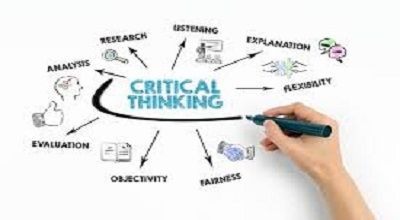Introduction
Understanding the concept of a food chain is crucial to comprehending the flow of energy and nutrients through ecosystems. From primary producers to apex predators, every organism plays a vital role in maintaining the balance of nature. This essay explores the intricacies of food chains, their components, dynamics, and significance to ecological systems.
What is a Food Chain?
A food chain represents a linear sequence of organisms through which energy and nutrients pass as one organism consumes another. It illustrates who eats whom in a particular ecosystem, starting with primary producers and ending with apex predators or decomposers. Each link in the chain depicts a trophic level, indicating the position an organism occupies in the transfer of energy.
Components of a Food Chain
- Primary Producers
- Primary producers, such as plants and algae, initiate the food chain by converting sunlight into chemical energy through photosynthesis. They form the base of the food chain and are consumed by herbivores.
- Herbivores
- Herbivores are animals that feed exclusively on plant material. They occupy the second trophic level and serve as prey for carnivores.
- Carnivores
- Carnivores are meat-eating animals that consume herbivores or other carnivores. They can be further categorized into primary, secondary, and tertiary carnivores based on their position in the food chain.
- Omnivores
- Omnivores are organisms that consume both plant and animal matter, occupying multiple trophic levels depending on their diet.
- Decomposers
- Decomposers, such as bacteria and fungi, break down organic matter from dead organisms and waste materials, returning nutrients to the soil or water and restarting the food chain cycle.
Dynamics of Energy Transfer
Energy transfer within a food chain follows the second law of thermodynamics, which states that energy moves from higher to lower trophic levels with decreasing efficiency. Key dynamics include:
- Energy Loss: At each trophic level, a significant portion of energy is lost as heat through metabolic processes, limiting the biomass available to higher trophic levels.
- Biomagnification: Some toxins and pollutants accumulate in organisms at higher trophic levels through a process called biomagnification, posing risks to top predators and sometimes to human health.
- Trophic Cascades: Changes in one trophic level can have cascading effects throughout an ecosystem, influencing population dynamics and species interactions.
Significance of Food Chains
Food chains are vital for ecosystem stability and biodiversity:
- Ecological Balance: They regulate population sizes and maintain species diversity by controlling the availability of resources.
- Energy Flow: They ensure the flow of energy through ecosystems, sustaining life and supporting complex interactions.
- Human Impact: Understanding food chains helps humans manage natural resources, mitigate environmental impacts, and conserve biodiversity.
Examples of Food Chains
- Aquatic Food Chain: From phytoplankton to fish to predators like sharks, each organism plays a crucial role in maintaining the health of aquatic ecosystems.
- Terrestrial Food Chain: From grasses to herbivores like deer to carnivores like wolves, terrestrial ecosystems demonstrate the interconnectedness of species and the flow of energy.
Human Impacts on Food Chains
- Habitat Destruction: Deforestation and urbanization disrupt food chains, leading to habitat loss and species decline.
- Overfishing and Hunting: Unsustainable practices can deplete populations and disrupt marine and terrestrial food chains.
- Climate Change: Alterations in temperature and precipitation patterns affect the distribution and behavior of species, impacting food chain dynamics.
Conclusion
In conclusion, food chains are fundamental to the functioning of ecosystems, illustrating the flow of energy and nutrients from producers to consumers to decomposers. Understanding their dynamics and components is crucial for conserving biodiversity and managing natural resources sustainably. By studying food chains, we gain insights into the interconnectedness of life forms and the delicate balance that supports life on Earth.
References
- Smith, J. (2020). Ecology and the Environment. Cambridge University Press.
- Odum, E. P., & Barrett, G. W. (2005). Fundamentals of Ecology. Brooks Cole.





